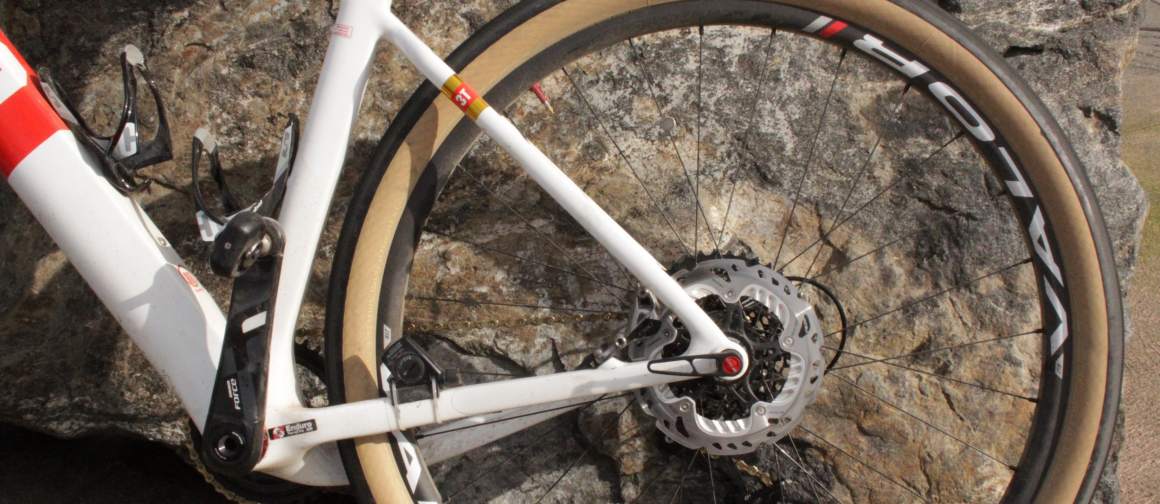
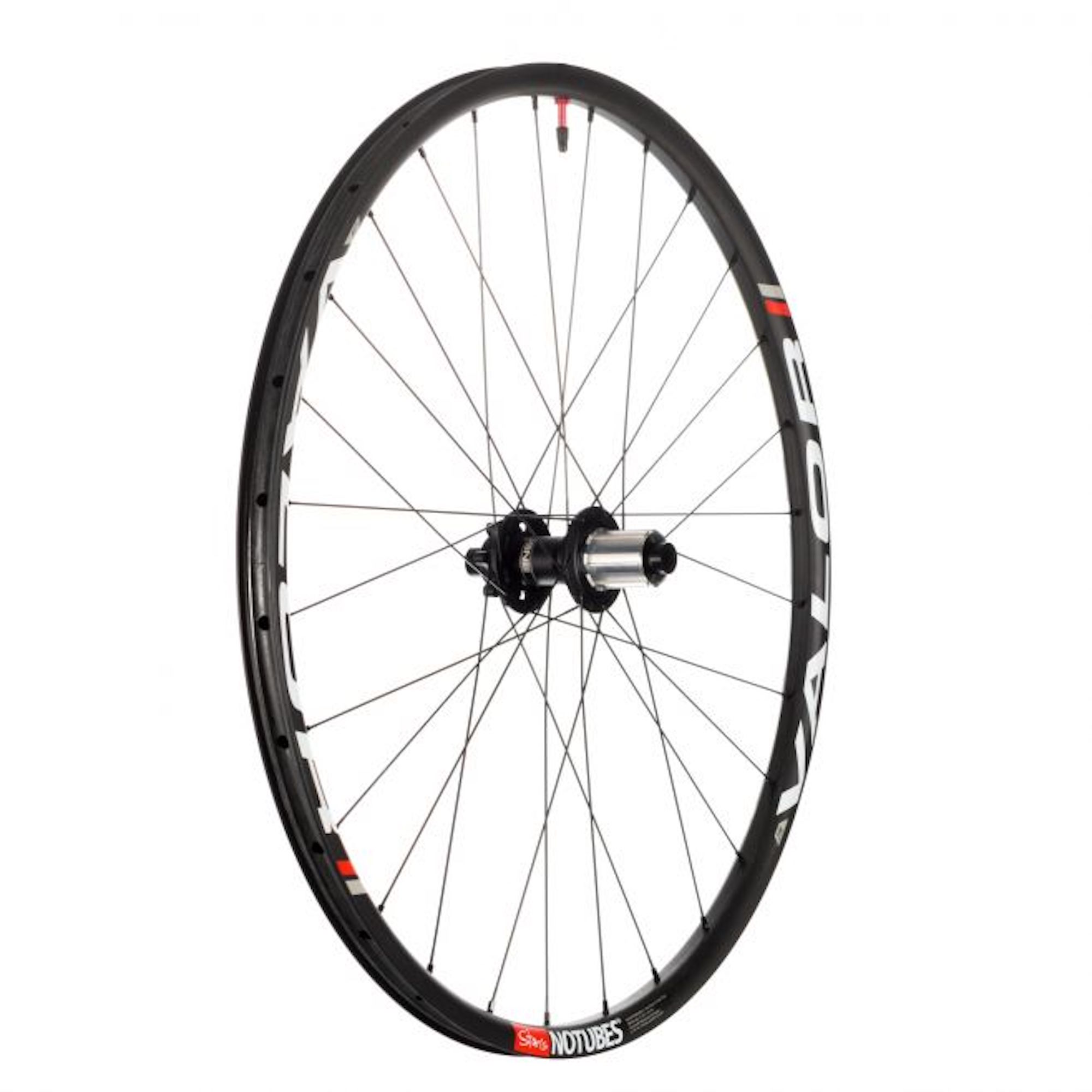
The sun set as I drove home from a day at the bike shop. The very fact that the sun was still above the horizon during my commute was the only thing marking the Labor Day holiday as at all special. It’s been a long summer of frantic custom bike production schedules…and tune-up requests that were made all the more desperate by the fact that they were submitted uncomfortably close to vacation departure dates. Every customer wants their thing right now, and that doesn’t happen if I leave right after business hours end.
Fatigue and burnout have been my close summer comrades during 10-14hr days. So I haven’t been riding much, and writing even less. But even as I’ve stared glassy-eyed at build charts and combed vendor websites for product, I’ve been thinking what I wanted to say about the new wave of gravel product that I had been riding all spring, participating in the dirt gran fondo series promoted by Vicious Cycle. Three products in particular have really impressed me: the 3T Exploro, the Compass Cycles Switchback Hill tire, and the Stan’s NoTubes Valor Pro wheelset.
Stan’s NoTubes is a company literally synonymous with tubeless technology. Within the industry-wide maelstrom of marketing boasts, it is fair to say that Stan’s has had more influence on the evolution of tubeless MTB rims than any other player, a position supported by the fact that many brands, both big and small, pay tribute to Stan’s in the form of licensing fees for their products…or have been forced to incrementally alter their rims to avoid falling foul of Stan’s design patents.
Obviously rim design is but one part of the system, but Stan’s rim designs freed tire manufacturers from the more rigid constraints of the early UST tubeless standard, allowing the development of practical, lightweight tires that have exceeded the performance of standard tube clincher tires….or at least for MTB. Road tubeless is a very different discussion and one that I would really like to talk about at some point on Bike Hugger. But in this post it’s all about Stan’s NoTubes for gravel.
It has been suggested to me that Stan’s rim and wheel selection has been somewhat confusing, so let me tell you how you should select the correct product, especially as it pertains to gravel riding since Stan’s does not specifically market any of their product to that demographic. And it’s not like gravel riding is associated with a well-defined niche of product, instead deriving from road, CX, and MTB categories.
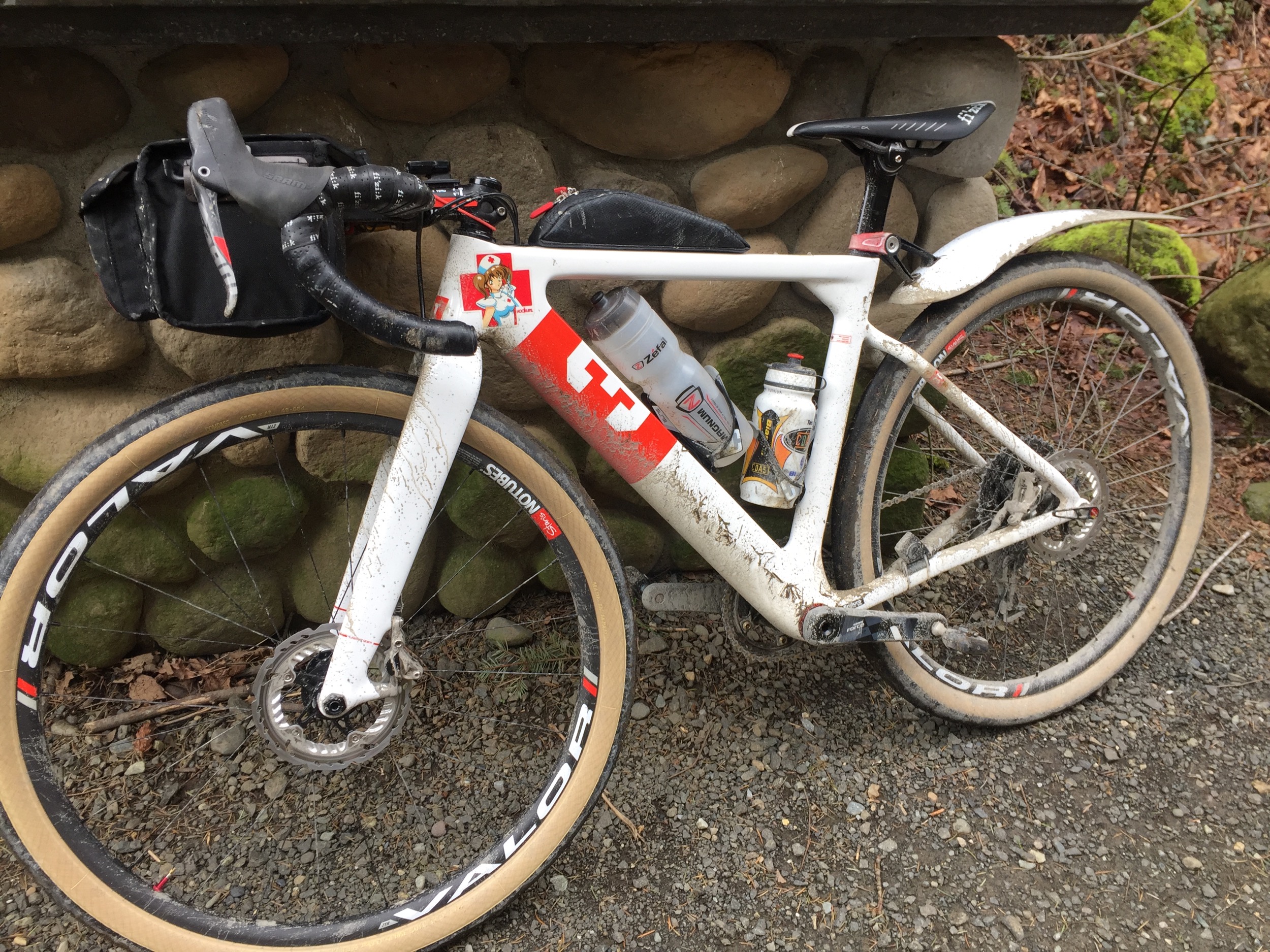
The two things to consider are tire pressure and wheel size.
Contemporary MTB tubeless rims frequently feature a hookless sidewall, which saves weight, makes for better strength-to-weight ratios (particularly in carbon), and allows the MTB tires to plump out to a larger volume for a given rim width. But that does limit the maximum pressure allowed for a given tire size. If you are riding a cyclocross bike that only has clearance for 33mm tires, on a gravel grinder you may want to run tire pressures approaching 50spi (depending on your weight and the terrain). In such a case, you should be looking at the Grail rim which has a hooked sidewall to support higher pressures. If you are a lighter rider who could run lower pressure in the those tires, or had more tire clearance for larger volume tire that could also go at lower pressure, perhaps you could choose the hookless IronCross rim. Another benefit of the IronCross is that it is a good 70-80gr lighter per rim than the Grail (380gr vs 465gr).
Yet both of those rims are only available in 700C. Bike Hugger-in-chief Byron and I are running gravel bikes that can accept big-volume 650B tires, which could run from 55psi to 32psi depending on the model, casing size, and terrain. The guys at Stan’s felt that their cross-country alloy rim, the Crest Mk3, was not suited to the upper end of this pressure range. Instead they recommended their carbon Valor wheelset, available in Pro and Team versions.
Now here’s the first thing that impressed me about the Valor wheelset: it is sick light. With 15×100 and 12x 142 thru-axles and Centerlock-compatible hubs, the bare 650B Valor Pro wheelset weighs an actual 1264gr (1346gr actual for Valor Team). That is legit lightweight, especially in contrast to 700C road rims. What’s counterintuitive about wheel/rim weights is that MTB rim product is frequently lighter than road, since modern tubeless MTB run at lower pressure than previous eras, requiring less strength in the rim sidewalls and consequently less material/mass. So while a 1500gr clincher road disc wheelset is rather impressive, I was not expecting that I would be riding a gravel wheelset that was sub-1300gr. Combine that with Compass Switchback Hill 650B x 48mm tires (400-415gr each), and you have a wheelset comparable by weight to high-end road items but several orders greater magnitude of tire volume. This is what it means to have your cake and eat it too.
The Valor Pro wheels just roll so well with those big tires, but you will be aware you’re not on road wheels. The supple sidewalls give incomparable comfort at speed, but you can definitely feel them lag when you give a hard dig on the pedals despite their relatively low rotational inertia. The compliant casing flexes far more than a 700C x 25mm road tire pumped harder than 90psi, and that blunts the application of power from the pedals to the ground. This is probably an unavoidable tradeoff of the big volume tires, and I expect that Switchback Hill’s low weight does as much to mitigate that as possible. But gravel rides are not conquered by sprinting. This wheel/rim combination really excels when the gravel gets too deep and too loose to comfortably ride 33mm tires. The perception is that everyone on skinnier tires collectively decides to ease off while you feel these wheels barely slow at all. Of course the Valor Pro wheels shine on the climbs, yet their light weight never betrayed my confidence on the descents. This wheelset is honestly one of my favorites of all time.
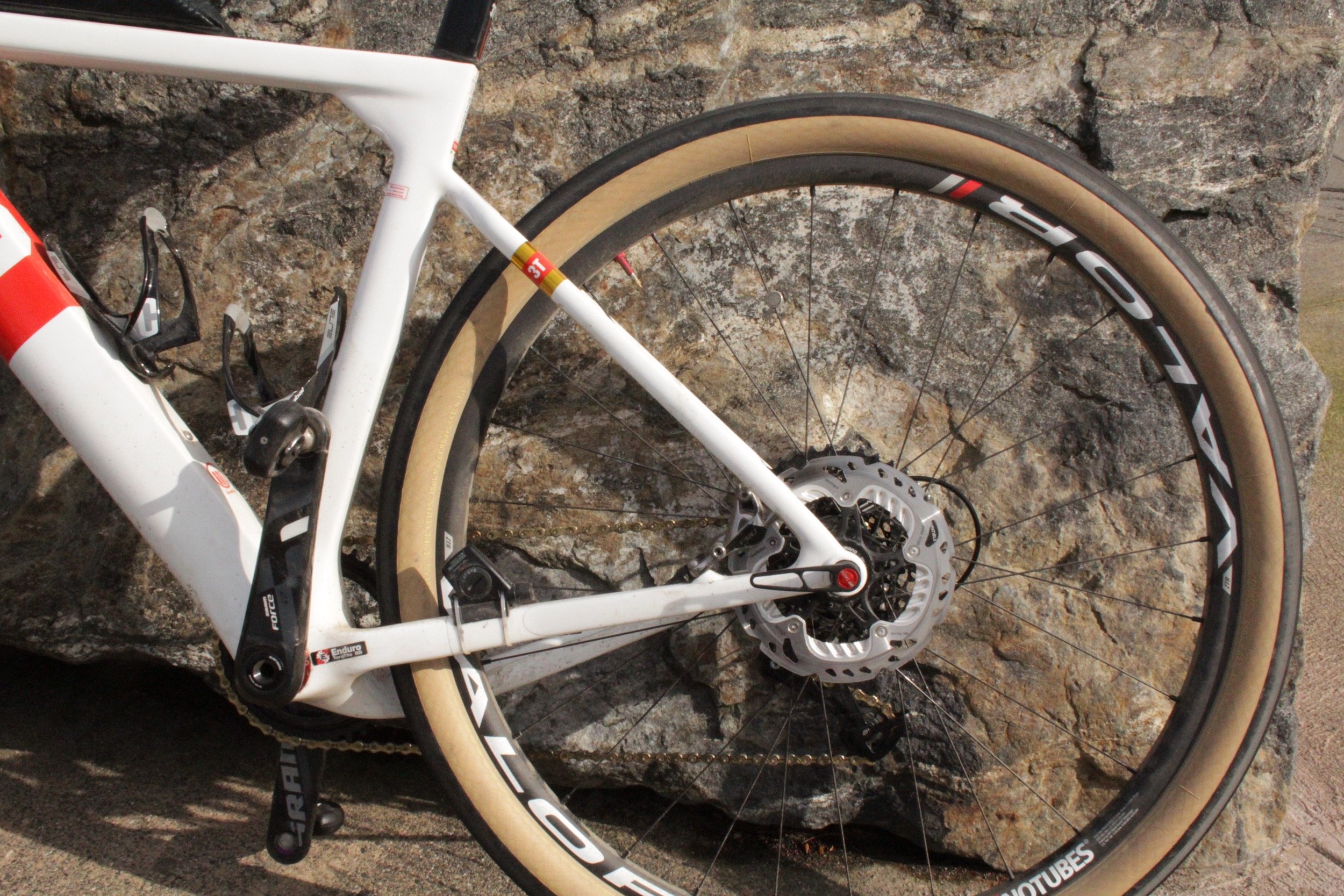
The internal width of the Valor rim is 21.6mm which, while significantly wider than XC rims of years past, is barely middle of the road nowadays. Stan’s NoTubes does bandy about their “WideRight” concept of matching tire width to internal rim width. Of course everyone knows that rim widths have been growing wider, but I guess the relevant detail is that Stan’s NoTubes believe that having too wide of a rim for given tire size is undesirable too. Perhaps there’s no industry consensus on the optimal relationship between tire casing width and internal rim width, but I could not find any fault with the Valor’s 21.6mm internal width while running 48mm/1.9″ tires, marginally narrower than the 2.0-2.25″ Stan’s recommends. Like all Stan’s rims, the Valor’s shape makes mounting tubeless tires easy.
Despite the reservations of Stan’s, I doubt I would have had any problems riding Stan’s Crest MkIII rims (23mm internal width), because I never exceed 40psi with the 650Bx48 tires I’ve been using. I’m not complaining though, as the Stan’s-built Crest MkIII wheelset is almost 300gr heavier than the Valor Pro. Only about 90gr of that is due to the difference in rims, which says a lot about how light the Crest MkIII rim is. It might be counterintuitive to choose carbon fibre components based on their relative durability, but when done right carbon rims are far tougher than alloy rims of comparable weight. With 24 front and 28 rear spokes, you wouldn’t expect the Valor Pro wheelset to be bombproof, but Stan’s does give it a higher maximum rider weight (230-lbs vs 190-lbs) than the Crest MkIII wheelset, despite the later having more and thicker spokes. Certainly I have had no troubles with the Valor wheels during my test period.
While it is true that the Valor wheelset was designed first as a cross-country wheelset for mountain bikes, it plays the role of gravel grinder and “road plus” exceedingly well….even against other brands’ product specifically targeted at this emerging demographic. 3T and Zipp are offering much deeper-section carbon rims on their 650B gravel wheels, but even if I am a aero zealot from way back I am hard pressed trying to justify a deep aerowheel on a gravel bike if it means a 200-300gr weight penalty. Given the amount of climbing on the gravel grinders I do….and the fact that even a 30mm outer width carbon rim can do very little to improve the aerodynamics of a 48mm tire…it just is not a tradeoff that makes sense. It doesn’t hurt that the Valor Pro wheelset is a serious deal at $1445.
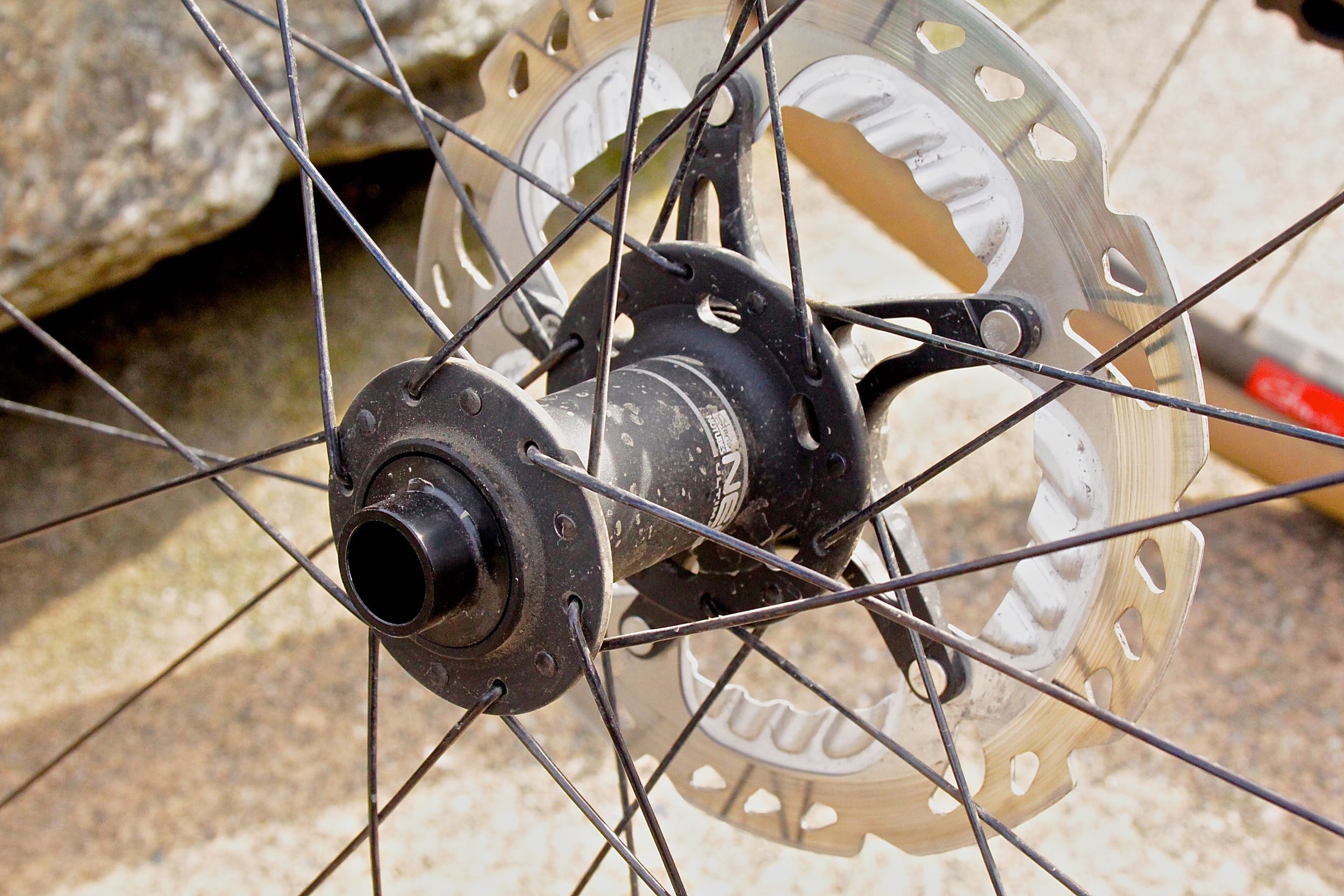
Even with a 301gr rim (for 650B size), Stan’s needed lightweight hubs to cheat the scale this hard. Their premium Neo Ultimate hubset has a clean, no-nonsense aesthetic that uses conventional J-bend spokes, guarantying maximum chance of finding a replacement from any local bike shop. Though the Valor Pro wheelset uses relatively exotic Sapim Laser spokes (the anorexic 1.8/1.5mm versions rather than 2.0/1.5mm), almost any spoke of the appropriate length will fit in a pinch. The external nipples are of course appreciated for ease of truing, though in my usage I only have had to make one very minor adjustment. The Neo Ultimate’s free hub body uses a 6-pawl configuration that engages in sets of three, giving 72 points of engagement (5deg). The hubs use modular ends to effortlessly adapt to virtually all axles configurations (for our purposes, that relevant options are 12×100/ 15×100/100QR front and 135QR/12×142 rear).
As impressive as these Neo Ultimate hubs are from the perspective of weight savings, I do have my nitpicks. One issue is that the press-on thru-axle hub ends do not fit as securely as I would like. This isn’t really an issue on the front hub, but a gargantuan 10-42 XD cassette mounted to the rear hub has considerable mass. And while a quick-release skewer could keep the rear hub somewhat together if the wheel is handled roughly off the bike, the thru-axle caps won’t keep the heft of the cassette from pulling the freehub clean off the hub. Even the best hubs seals can’t keep keep the internal mechanisms clean when half the hub is lying on the ground below the rest of the wheel. Sure, this isn’t an issue while riding the bike, or even transporting the wheels together with the bike, but it wouldn’t be practical for spare wheels in the pits of a cyclocross race. The Neo Ultimate is far from the only hub design on the market with this quirk though, and I am willing to forgive this annoyance because of the weight, price, and performance.
The Neo Ultimate hubset is available for either 6-bolt or Centerlock style rotors, and if you haven’t settled on a preference I urge you to pick Centerlock. The ease of mounting and removing rotors is far superior to 6-bolt, and anyways there are adapter to mount 6-bolt rotors to Centerlock hubs.
Besides the Valor Pro wheelset, there is also a less expensive Valor Team version that sells for a very attractive $1140. There are a few subtle differences in the hub design, but the Team wheelset is just 82gr heavier in the same 650B configuration. Up until a few weeks ago, the Valor Team was the topline cross country wheel from Stan’s NoTubes; then the company debuted the carbon Podium SRD wheelset. However, so far the wider rim of the Podium is only available in the 29er/700C size, the most popular size for cross country racing. Since Bike Hugger staff personal gravel bikes can accept 700C x 40 or 650B x 2.1″, a wheel specifically meant for 700C x 2.00-2.25″ doesn’t fit our gravel agenda.
The Podium SRD would be worth a look though if your gravel bike takes 29er tires, or obviously if you’re looking to upgrade your cross-country 29er MTB. The Podium SRD uses the same hubs as the Valor Pro, but the new Podium rim is lighter, wider, and laterally stiffer than the Valor rim for the same 29er size.
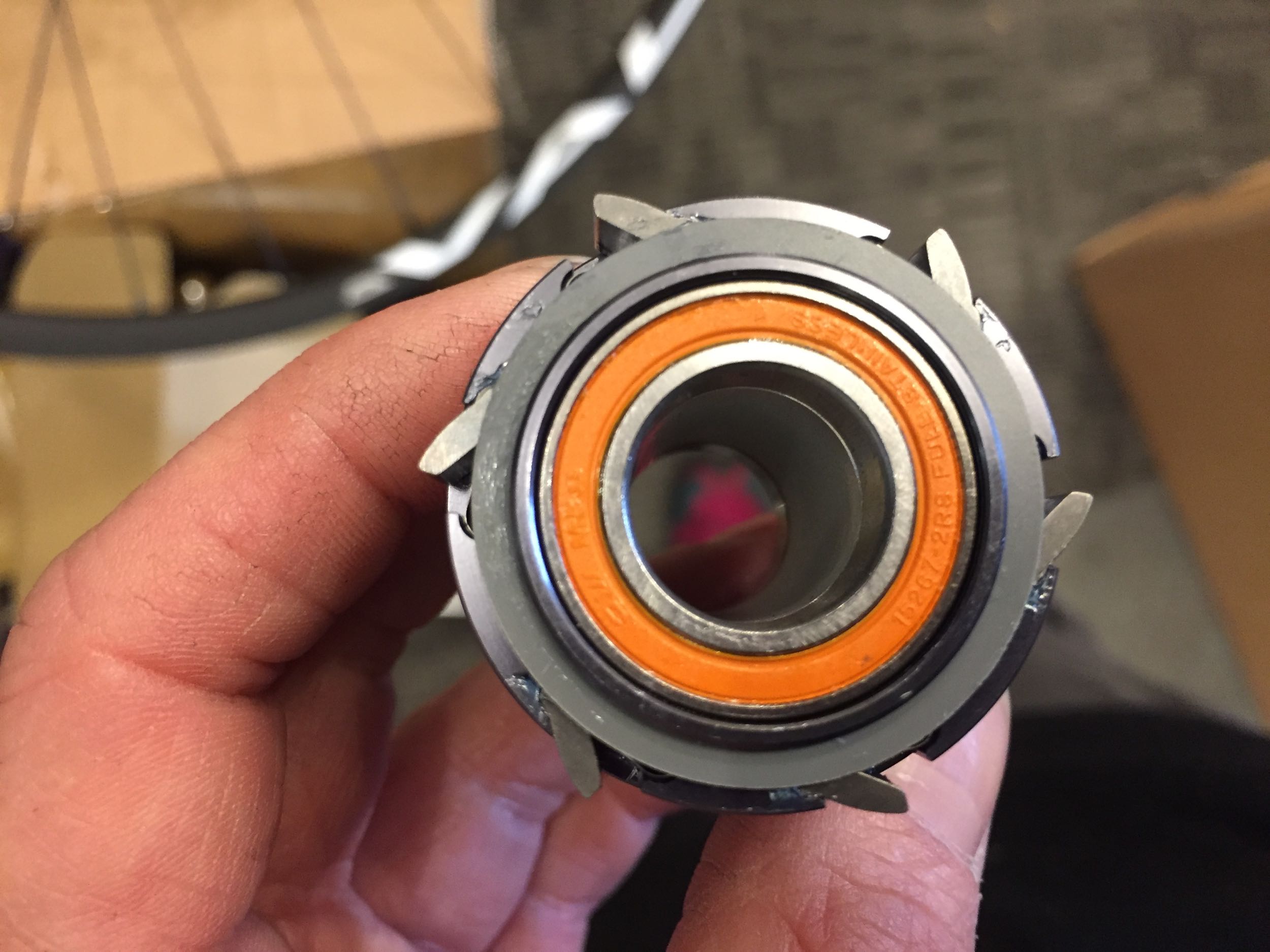
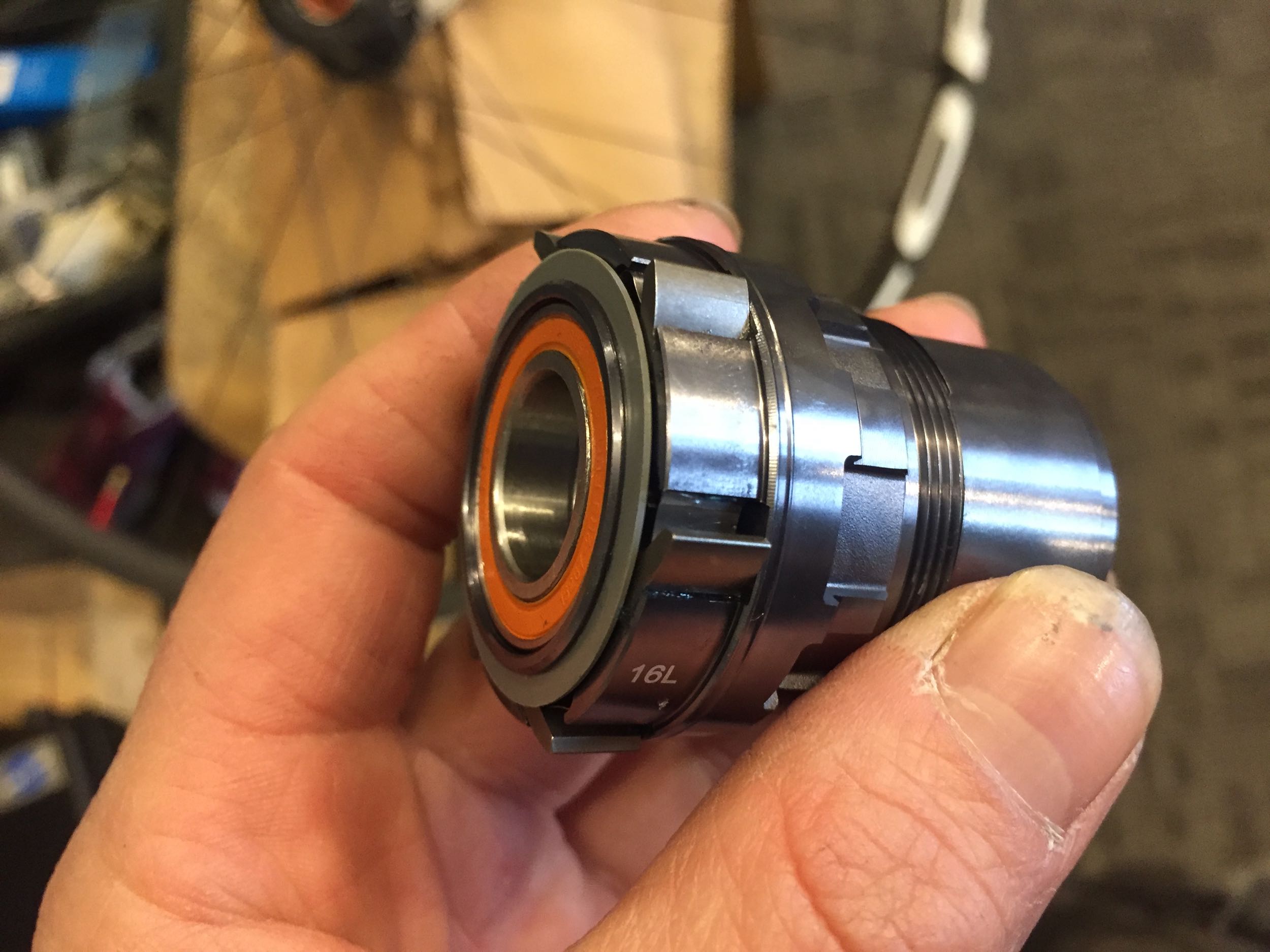
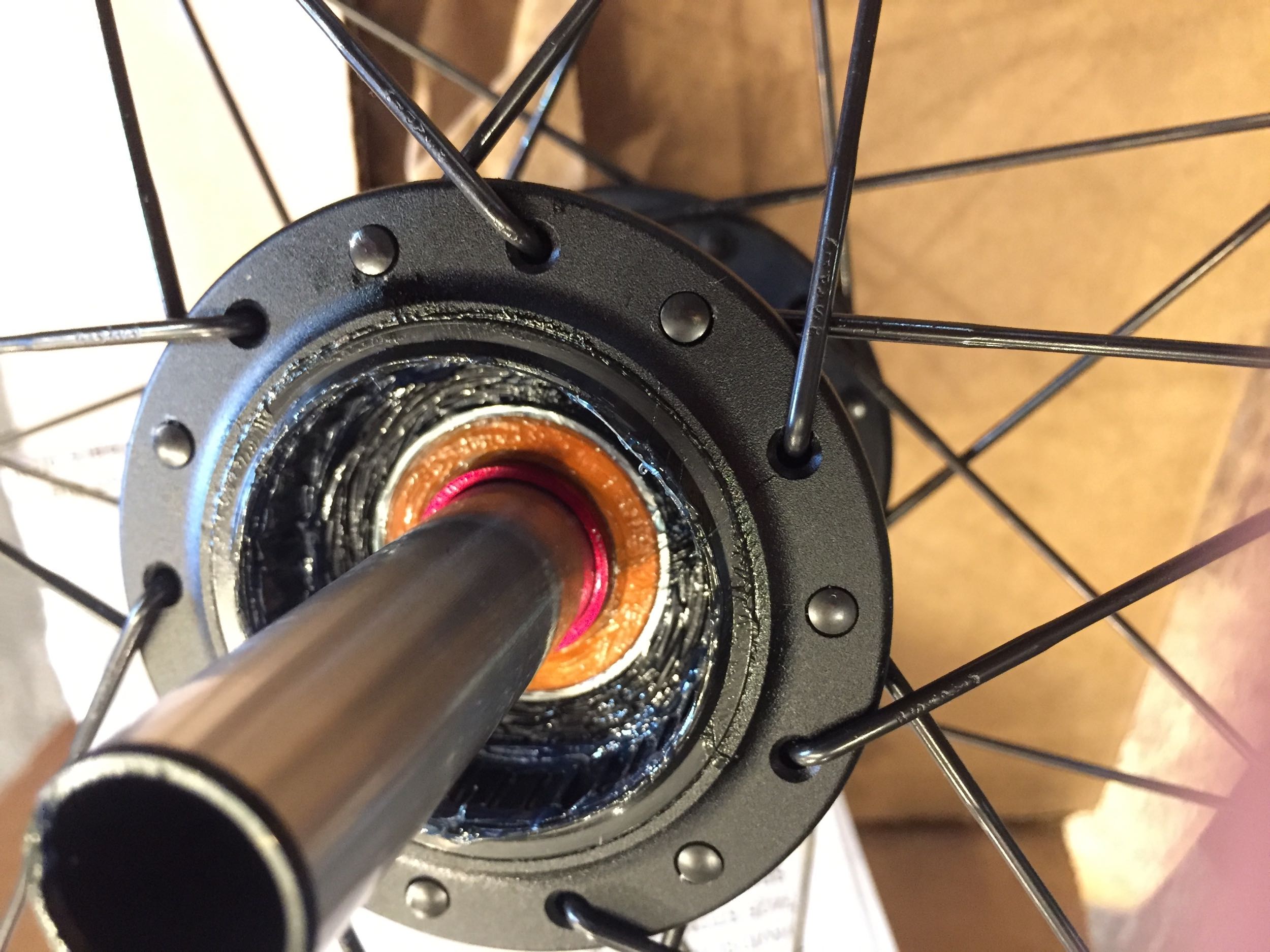
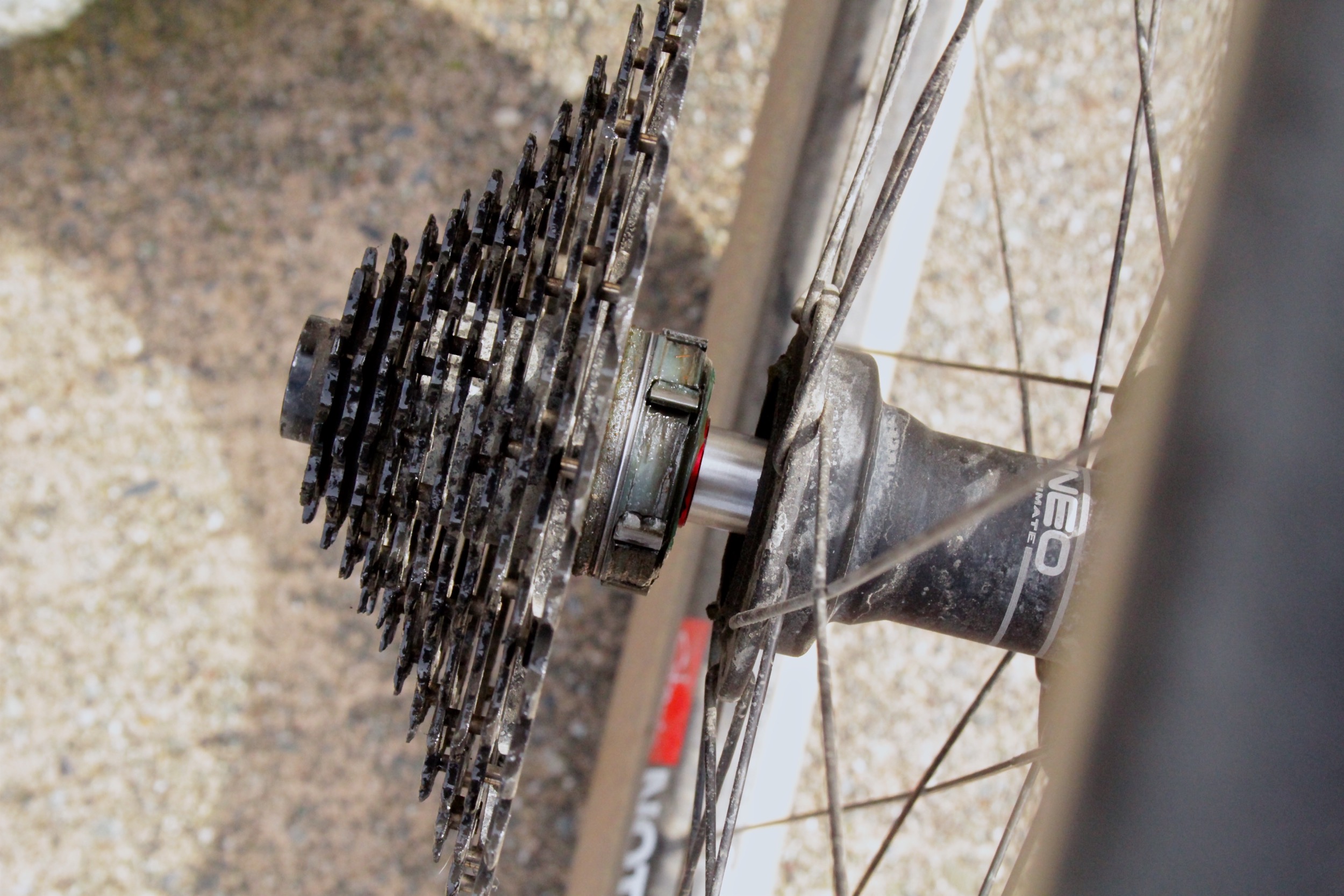
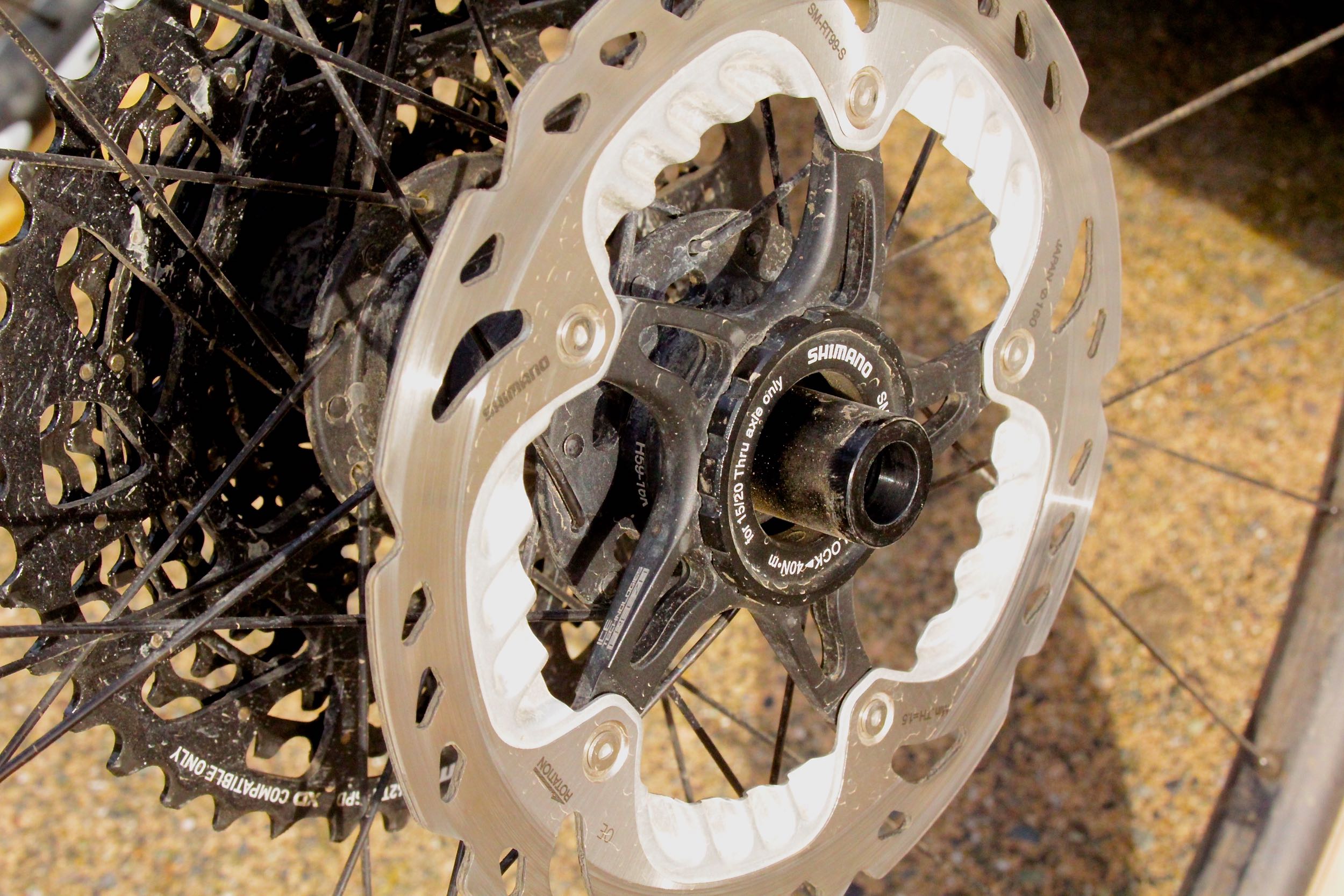
We're riding townies, adventure, and mountain bikes. Find recommendations on our store page. As Amazon Associates we earn from qualifying purchases.